Ron Jacobs at CounterPunch:
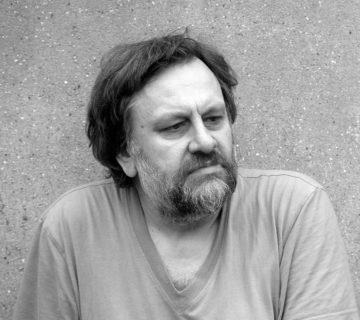 Zizek has been out of the left-leaning limelight for a while. Maybe this inattention to his ego from the media, his fans and detractors is why he penned a piece attacking pacifists and calling for a stronger NATO in the June 21, 2022 edition of the mainstream liberal publication British publication the Guardian. Yes, like a few others mostly in the US/western European Left, Zizek has decided that the only response to the Russia-Ukraine conflict is full-on support for the Kyiv government, no matter what. Going beyond others on the Left who have voiced similar sentiments, but kept their opposition to NATO/US troops and air involvement intact, Zizek has jumped full on board with the “fight to the last Ukrainian” crowd; the liberals, nazis, church patriarchs and every other segment of the pro-war crowd.
Zizek has been out of the left-leaning limelight for a while. Maybe this inattention to his ego from the media, his fans and detractors is why he penned a piece attacking pacifists and calling for a stronger NATO in the June 21, 2022 edition of the mainstream liberal publication British publication the Guardian. Yes, like a few others mostly in the US/western European Left, Zizek has decided that the only response to the Russia-Ukraine conflict is full-on support for the Kyiv government, no matter what. Going beyond others on the Left who have voiced similar sentiments, but kept their opposition to NATO/US troops and air involvement intact, Zizek has jumped full on board with the “fight to the last Ukrainian” crowd; the liberals, nazis, church patriarchs and every other segment of the pro-war crowd.
In his column, he lumps Noam Chomsky and Henry Kissinger together, solely because they both support negotiations instead of a wider war. In making this comparison conveniently ignores the differences in each man’s statements on the subject.
More here.

 It’s tempting to fixate on the palliative effects of
It’s tempting to fixate on the palliative effects of  A 20-year-old woman who was born with a small and misshapen right ear has received a 3-D printed ear implant made from her own cells, the manufacturer announced on Thursday. Independent experts said that the transplant, part of the first clinical trial of a successful medical application of this technology, was a stunning advance in the field of tissue engineering.
A 20-year-old woman who was born with a small and misshapen right ear has received a 3-D printed ear implant made from her own cells, the manufacturer announced on Thursday. Independent experts said that the transplant, part of the first clinical trial of a successful medical application of this technology, was a stunning advance in the field of tissue engineering.
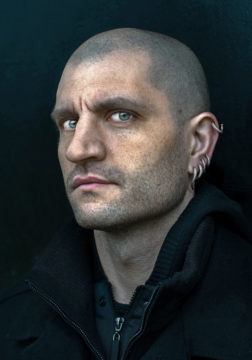 What, I asked Miéville, might a counter-factual history of Marxism-communism look like if instead of “spectre” the opening had always included “hobgoblin”? “The serious answer,” he replied, “is that nothing would have changed. But the hobgoblin is a stranger figure than the ghost. What has always inspired me is the ‘red sublime’ – the unsayable, the beyond-speech, the apophatic; literally unthinkable change. I want a radical movement that understands that there is no ‘right’ way to do things. Maybe the hobgoblin is closer to the sublime than the spectre.” There are few outside academia who are better qualified to write on the Manifesto than Miéville. As a novelist, he is receptive to the “thunderously uncynical” style and expression of its authors – the declamatory tenor through which Marx and Engels literally willed the future. There is also the remarkable shift in voice into the second person, when the Manifesto goes from discussing the bourgeoisie to excoriating it directly, “You reproach us [communists] with intending to do away with your property. Precisely so; that is just what we intend.”
What, I asked Miéville, might a counter-factual history of Marxism-communism look like if instead of “spectre” the opening had always included “hobgoblin”? “The serious answer,” he replied, “is that nothing would have changed. But the hobgoblin is a stranger figure than the ghost. What has always inspired me is the ‘red sublime’ – the unsayable, the beyond-speech, the apophatic; literally unthinkable change. I want a radical movement that understands that there is no ‘right’ way to do things. Maybe the hobgoblin is closer to the sublime than the spectre.” There are few outside academia who are better qualified to write on the Manifesto than Miéville. As a novelist, he is receptive to the “thunderously uncynical” style and expression of its authors – the declamatory tenor through which Marx and Engels literally willed the future. There is also the remarkable shift in voice into the second person, when the Manifesto goes from discussing the bourgeoisie to excoriating it directly, “You reproach us [communists] with intending to do away with your property. Precisely so; that is just what we intend.”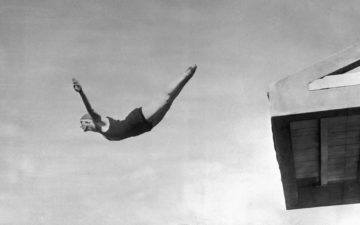 In Galileo’s Dialogue Concerning the Two Chief World Systems (1632), three Italian gentlemen – one philosopher and two laymen – debate the structure of the Universe. The philosopher, Salviati, argues in support of the Copernican theory, even though it requires a moving Earth – something that strikes his interlocutors as problematic, if not absurd. After all, we don’t feel the ground moving beneath our feet; clouds and birds are not swept backwards as the planet whooshes through space; a ball dropped from a tower does not land far away from the base of that tower.
In Galileo’s Dialogue Concerning the Two Chief World Systems (1632), three Italian gentlemen – one philosopher and two laymen – debate the structure of the Universe. The philosopher, Salviati, argues in support of the Copernican theory, even though it requires a moving Earth – something that strikes his interlocutors as problematic, if not absurd. After all, we don’t feel the ground moving beneath our feet; clouds and birds are not swept backwards as the planet whooshes through space; a ball dropped from a tower does not land far away from the base of that tower.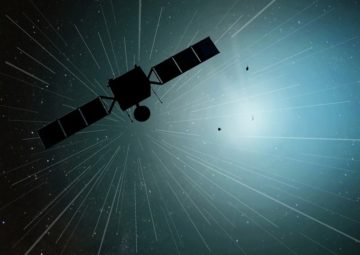 The European Space Agency (ESA) has
The European Space Agency (ESA) has 
 In Arthur W. Frank’s foundational text for narrative medicine, The Wounded Storyteller: Body, Illness, and Ethics (1995), the ill, Frank suggests, need “to tell their stories, in order to construct new maps and new perceptions of their relationships to the world.” Frank posits three common narrative structures for the experience of illness: restitution, chaos, and quest. In restitution narratives, the healthy person becomes sick and then they become healthy again, a quick, clean plot that reifies health in ways too naïve to be meaningful. This, of course, is the arc popular culture prefers.
In Arthur W. Frank’s foundational text for narrative medicine, The Wounded Storyteller: Body, Illness, and Ethics (1995), the ill, Frank suggests, need “to tell their stories, in order to construct new maps and new perceptions of their relationships to the world.” Frank posits three common narrative structures for the experience of illness: restitution, chaos, and quest. In restitution narratives, the healthy person becomes sick and then they become healthy again, a quick, clean plot that reifies health in ways too naïve to be meaningful. This, of course, is the arc popular culture prefers. In 1763, the young James Boswell finished his “London Journal,” one of the frankest accounts of high and low life in the eighteenth century. The following year, he embarked on a Grand Tour. In a Berlin tavern, he encountered a certain Neuhaus. This voluble personage of thirty-nine, unusually tall, with a dark complexion and affected manners, was an Italian who “wanted to shine as a great philosopher,” Boswell wrote, “and accordingly doubted of his own existence and everything else. I thought him a blockhead.”
In 1763, the young James Boswell finished his “London Journal,” one of the frankest accounts of high and low life in the eighteenth century. The following year, he embarked on a Grand Tour. In a Berlin tavern, he encountered a certain Neuhaus. This voluble personage of thirty-nine, unusually tall, with a dark complexion and affected manners, was an Italian who “wanted to shine as a great philosopher,” Boswell wrote, “and accordingly doubted of his own existence and everything else. I thought him a blockhead.” We’ll start with a pair of shoes. In 1944, a young Italian woman named Emilia “Ilia” Terzulli marries an older English soldier named Esmond Warner. They’re an unlikely couple. Nicknamed “La Giraffa,” Ilia is tall, poor, gorgeous, and untraveled. Esmond is balding, bespectacled, and worldly. She’s not just Italian but southern Italian; he’s not just English but English English, his family’s wealth faded but not their lordly idiosyncrasies. (His mum goes by Mother Rat; his father, a former professional cricketer, by Plum; his childhood pet rat by Scoot.) And so, to make his Bari-born wife feel at home in South Kensington, Esmond buys Ilia a pair of shoes. More specifically, he buys her “bespoke brogues”: sturdy, plain-ish, yet expensive shoes that mark Ilia’s “formal enrolment in the world of the squirearchy, hunting, going to the point-to-point, the harriers, the beagles, the open-gardens scheme, the charity fête.”
We’ll start with a pair of shoes. In 1944, a young Italian woman named Emilia “Ilia” Terzulli marries an older English soldier named Esmond Warner. They’re an unlikely couple. Nicknamed “La Giraffa,” Ilia is tall, poor, gorgeous, and untraveled. Esmond is balding, bespectacled, and worldly. She’s not just Italian but southern Italian; he’s not just English but English English, his family’s wealth faded but not their lordly idiosyncrasies. (His mum goes by Mother Rat; his father, a former professional cricketer, by Plum; his childhood pet rat by Scoot.) And so, to make his Bari-born wife feel at home in South Kensington, Esmond buys Ilia a pair of shoes. More specifically, he buys her “bespoke brogues”: sturdy, plain-ish, yet expensive shoes that mark Ilia’s “formal enrolment in the world of the squirearchy, hunting, going to the point-to-point, the harriers, the beagles, the open-gardens scheme, the charity fête.” One hundred and seventy-six years ago today, on the evening of Monday, June 22, 1846, the painter Benjamin Robert Haydon—sixty years old and facing imminent financial ruin—locked himself in his studio in his house on Burwood Place, just off London’s Edgware Road. The month had been the hottest anyone could remember: that day, thermometers in the city stood at ninety degrees in the shade. Despite the heat, that morning Haydon had walked to a gunmaker’s on nearby Oxford Street and purchased a pistol. He spent the rest of the day at home, composing letters and writing a comprehensive, nineteen-clause will.
One hundred and seventy-six years ago today, on the evening of Monday, June 22, 1846, the painter Benjamin Robert Haydon—sixty years old and facing imminent financial ruin—locked himself in his studio in his house on Burwood Place, just off London’s Edgware Road. The month had been the hottest anyone could remember: that day, thermometers in the city stood at ninety degrees in the shade. Despite the heat, that morning Haydon had walked to a gunmaker’s on nearby Oxford Street and purchased a pistol. He spent the rest of the day at home, composing letters and writing a comprehensive, nineteen-clause will.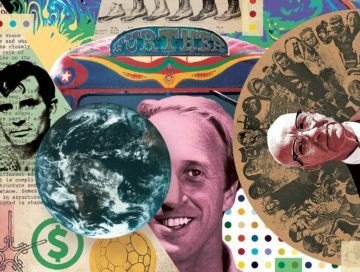 Stewart Brand is not a scientist. He’s not an artist, an engineer, or a programmer. Nor is he much of a writer or editor, though as the creator of the Whole Earth Catalog, that’s what he’s best known for. Brand, 83, is a huckster—one of the great hucksters in a time and place full of them. Over the course of his long life, Brand’s salesmanship has been so outstanding that scholars of the American 20th century have secured his place as a historical figure, picking out the blond son of Stanford from among his peers and seating him with inventors, activists, and politicians at the table of men to be remembered. But remembered for what, exactly?
Stewart Brand is not a scientist. He’s not an artist, an engineer, or a programmer. Nor is he much of a writer or editor, though as the creator of the Whole Earth Catalog, that’s what he’s best known for. Brand, 83, is a huckster—one of the great hucksters in a time and place full of them. Over the course of his long life, Brand’s salesmanship has been so outstanding that scholars of the American 20th century have secured his place as a historical figure, picking out the blond son of Stanford from among his peers and seating him with inventors, activists, and politicians at the table of men to be remembered. But remembered for what, exactly?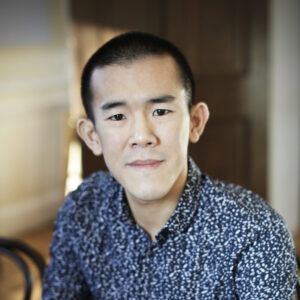 All of us construct models of the world, and update them on the basis of evidence brought to us by our senses. Scientists try to be more rigorous about it, but we all do it. It’s natural that this process will depend on what form that sensory input takes. We know that animals, for example, are typically better or worse than humans at sight, hearing, and so on. And as Ed Yong points out in his new book, it goes far beyond that, as many animals use completely different sensory modalities, from echolocation to direct sensing of electric fields. We talk about what those different capabilities might mean for the animal’s-eye (and -ear, etc.) view of the world.
All of us construct models of the world, and update them on the basis of evidence brought to us by our senses. Scientists try to be more rigorous about it, but we all do it. It’s natural that this process will depend on what form that sensory input takes. We know that animals, for example, are typically better or worse than humans at sight, hearing, and so on. And as Ed Yong points out in his new book, it goes far beyond that, as many animals use completely different sensory modalities, from echolocation to direct sensing of electric fields. We talk about what those different capabilities might mean for the animal’s-eye (and -ear, etc.) view of the world.